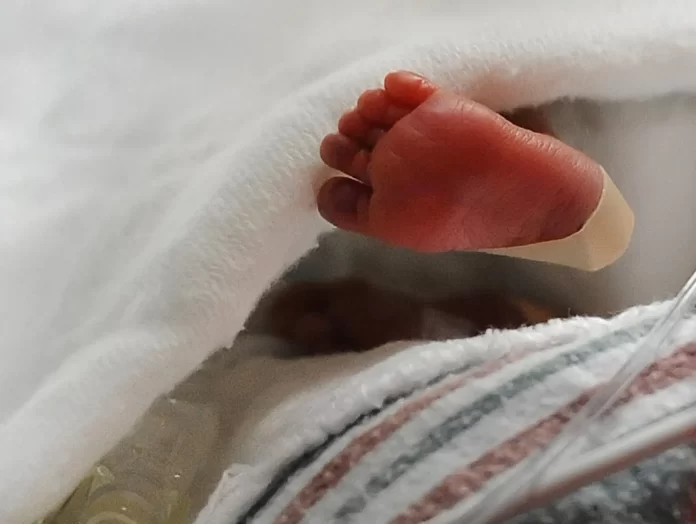
For the first time in more than two decades, the United States saw an increase in infant mortality rates in 2022.
According to a report released Wednesday by the National Center for Health Statistics, the overall infant mortality rate rose by 3% from 2021 to 2022. The mortality rate for neonatal infants climbed by 3%, while the post-neonatal mortality rate—for infants who survived past 28 days—rose by 4%.
Infant deaths due to maternal complications—like preeclampsia or preterm delivery—and bacterial sepsis also shot up by 8% and 14%, respectively.
“We live in a country with significant resources, so the infant mortality rate and the increase are shockingly high,” wrote Dr. Sandy Chung, the president of the American Academy of Pediatrics, in an email to CNN. “As pediatricians who help children grow into healthy adults, any death of any child is one too many. The infant mortality rate in this country in unacceptable.”
For public health experts, infant mortality is often a useful benchmark for a country’s health system at large, said Danielle Ely, a health statistician at NCHS and one of the report’s authors. This year’s increase in infant mortality, she said, could be either a “weird blip” for one year, or the sign of an underlying health care issue. They’ll need to see next year’s data to know for certain.
The increase in infant mortality could also be a product of the COVID-19 pandemic, which put a strain on communities and health resources, said Rachel Hardeman, a professor of health and racial equity at the University of Minnesota.
The year before, in 2021, an analysis from the US Centers for Disease Control and Prevention found that while the total number of infant deaths had increased from 2020, the mortality rate had remained the same—at 5.44 deaths per 1,000 live births.
The new report, citing provisional data, found the rate rose to 5.60 infant deaths per 1,000 births, corresponding with 20,538 infant deaths in 2022.
“This is clearly the wrong direction,” said Dr. Elizabeth Cherot, President and CEO of March of Dimes, a nonprofit maternal and infant health advocacy organization. “Overall, I’m just discouraged.”
The NCHS study found that the infant mortality rate in 2022 increased for mothers aged 25-29. Mortality rates also climbed for preterm babies, male infants, and for infants born in Georgia, Iowa, Missouri and Texas. Nevada, however, saw a decline in infant mortality rates.
The report also found that different racial groups experienced different rates of infant mortality. For infants of American Indian or Alaska Native women, mortality rates climbed by over 20% from about 7.4 deaths per 1,000 births to over 9 deaths per 1,000 births. Infant mortality rates for White women also increased by about 3%.
Mortality rates for infants of Black women did not increase by much, the report found, but Black infants experienced the highest overall rates of infant mortality: nearly 11 deaths per 1,000 births, or over double the mortality rate of White infants.
“We know that for people who live in or near poverty and for certain racial and ethnic groups there are significant challenges with getting access to a doctor or getting treatments,” Chung wrote. “This can lead to moms and babies showing up for care when they are sicker and more likely have serious outcomes, even death.”
Cherot and Hardeman described areas with those accessibility challenges as “maternity care deserts” where people—predominantly women of color—might have to drive for long distances to find scarce labor or delivery units.
Those women also face a higher risk of preterm birth, Cherot said — and when coupled with obstacles to receiving health care, the probability of infant complications is “exceptionally high.”
“In a country as wealthy as ours, no one should have difficulty accessing healthcare,” Chung wrote. “We need to change policies to help lift families out of poverty and help them get access to healthcare sooner, before is it too late.”
According to Hardeman, racism and marginalization, particularly for indigenous and Black people, can also have a physiological toll on health outcomes. Training physicians and other health care providers about the links between inequity and health, she said, might “chip away” at some of the racial disparities in infant health.
Based on her previous research, in fact, Hardeman found that when Black infants were delivered by Black physicians, a higher number survived —particularly during challenging births or maternal complications.
According to the report, maternal complications and bacterial sepsis, or infection, were responsible for a greater rate of newborn deaths than before. Maternal health and infant mortality are often intertwined, Cherot explained, and maternal complications like preeclampsia and diabetes have been on the rise — resulting in high maternal death rates compared to other high-income countries.
However, the NCHS study only reports the latest numbers, without explanations for why infant mortality may be rising. Cherot hopes that researchers dive into the data to better understand the underlying for growing infant deaths.
“I see a 14% increase [in infant mortality from bacterial sepsis],” Cherot said. “When I see double digits, I start to worry. There’s a lot more questions than answers with this data.”
“I think we have a lot more questions to be able to get into the heart of what’s happening,” Hardeman added.
SOURCE: cnn.com

